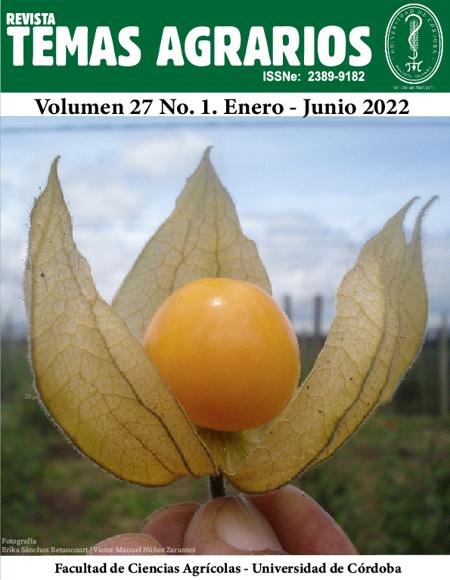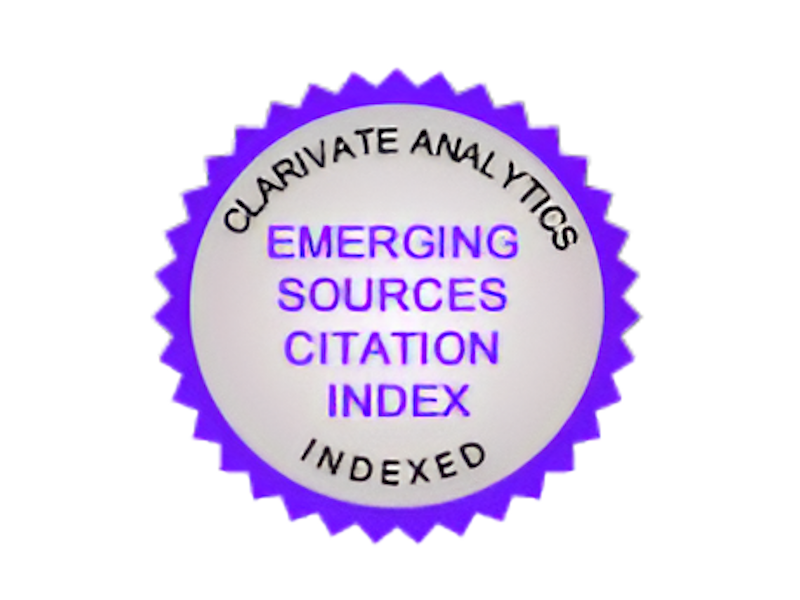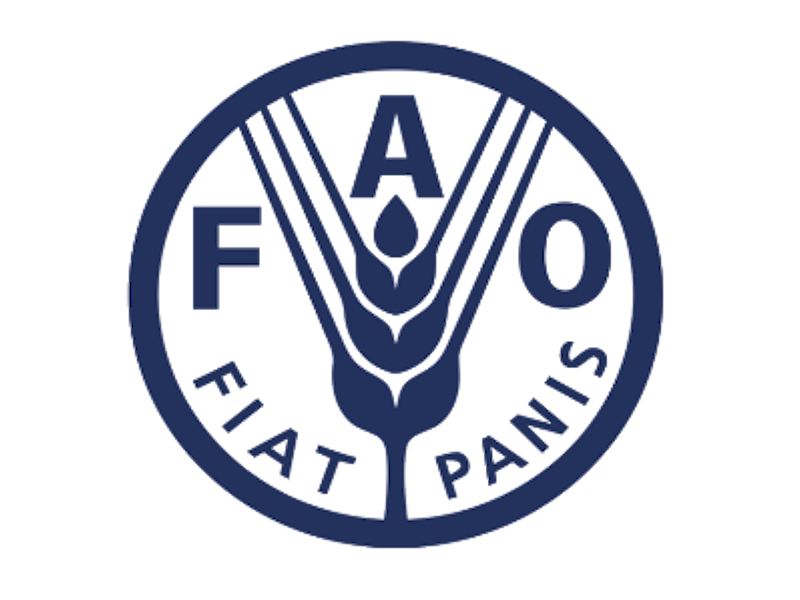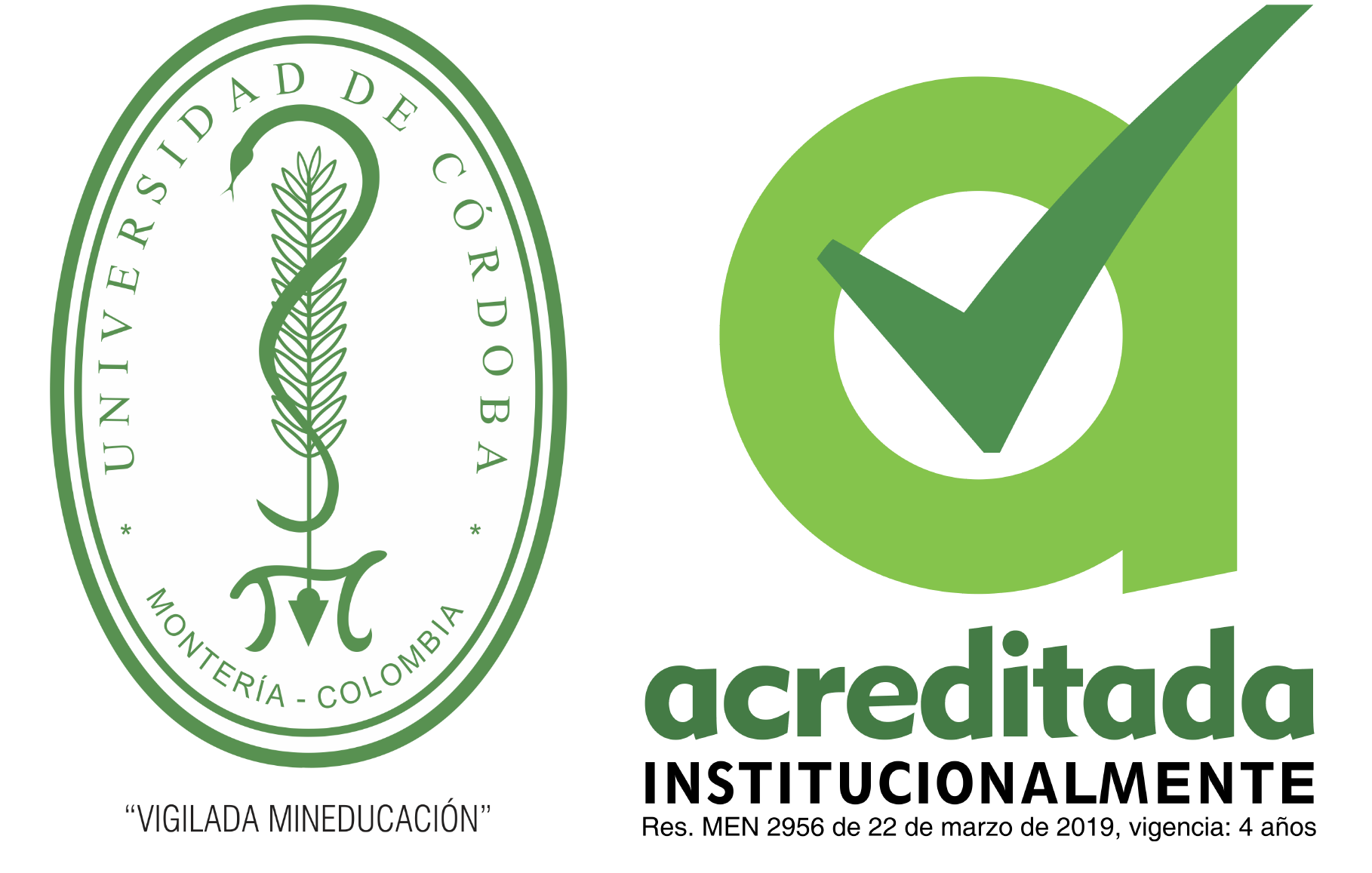Identificación de microorganismos asociados al suelo, sustrato y agua de un sistema productivo de Cannabis sativa L.
Identification of microorganisms associated with the soil, substrate and water of a Cannabis sativa L. production system.

Esta obra está bajo una licencia internacional Creative Commons Atribución-NoComercial 4.0.
Mostrar biografía de los autores
El cultivo de cannabis medicinal ha tomado una gran importancia en los últimos años en Colombia y en otros países de Latinoamérica. Dadas las características de producción del cultivo, que se basa fundamentalmente en modelos orgánicos, es importante conocer los microorganismos que acompañan el sistema de producción y sus posibles implicaciones en el manejo. En este trabajo se aislaron y caracterización los microorganismos en las diferentes fases de producción de un cultivo de cannabis en alta densidad: plantulación, o áreas de propagación, lotes de producción y las áreas de poscosecha (presecado de flor); en cada una de estas áreas se tomaron muestras de: suelo, sustratos y agua y se identificaron los microorganismos presentes, por siembra directa en medios de cultivos, empleando identificación microscópica y caracterización
molecular. Se encontró una alta diversidad en todas las áreas de producción y se evidenció que los microorganismos benéficos (Trichoderma spp. y Bacillus spp.) aplicados al sistema productivo ayudan a regular las poblaciones de los
microorganismos en el suelo y en lo sustratos. Se identificó que la perlita y la fibra de coco favorecen el desarrollo de las poblaciones de microorganismos solubilizadores de fósforo y fijadores de nitrógenoy que la producción de compost a partir de los desechos del cultivo es fitosanitariamente seguro. No se identificó en ninguna de las muestras evaluadas poblaciones de patógenos en niveles que pudieran explicar la presencia de enfermades en el cultivo.
Visitas del artículo 636 | Visitas PDF
Descargas
- André, C. M., Hausman, J. F., and Guerriero, G. 2016. Cannabis sativa: The plant of the thousand and one molecules. Frontiers in Plant Science Feb 4;7:19. doi: https://doi.org/10.3389/fpls.2016.00019
- Adesina, I., Bhowmik, A., Sharma, H,. and Shahbazi, A. 2020. A Review on the Current State of Knowledge of Growing Conditions, Agronomic Soil Health Practices and Utilities of Hemp in the United States. Agriculture. 2020; 10(4):129. https://doi.org/10.3390/agriculture10040129
- Amendola, G., Bocca, B., Picardo, V., Pelosi, P., Battistini, B., Ruggieri, F., Attard Barbini, D., De Vita, D., Madia, V.N., Messore, A., Di Santo, R. and Costi, R. 2021. Toxicological aspects of cannabinoid, pesticide and metal levels detected in light Cannabis inflorescences grown in Italy. Food Chem Toxicol. Doi: https://doi.org/10.1016/j.fct.2021.112447
- Becerra, J. M., Quintero, D., Martínez, M. y Matiz, A. 2011. Caracterización de microorganismos solubilizadores de fosfato aislados de suelos destinados al cultivo de uchuva (Physalis peruviana L.). Revista Colombiana de Ciencias Hortícolas 5(2): 195-208.
- Betancur, L. 2018. Actinobacterias marinas como fuente de compuestos con actividad biológica para el control de fitopatógenos. Tesis Doctorado en Ciencias – Química, Universidad Nacional de Colombia, Bogotá.
- Bernstein, N., Gorelick, J. Z. R. and Koch, S. 2019. Impact of N, P, K, and Humic Acid Supplementation on the Chemical Profile of Medical Cannabis (Cannabis sativa L). Frontiers in Plant Science 10: 1-13. https://doi.org/10.3389/fpls.2019.00736
- Braga, R. M., Dourado, M. N. and Araújo, W. L. 2016. Microbial interactions: ecology in a molecular perspective. Brazilian Journal of Microbiology 47: 86–98. https://doi.org/10.1016/j.bjm.2016.10.005
- Cabral, J. P. S. 2010. Water microbiology. Bacterial pathogens and water. International Journal of Environmental Research and Public Health 7(10): 3657–3703. https://doi.org/10.3390/ijerph7103657
- Cao, G., Song, T., Shen, Y., Jin, Q., Feng, W., Fan, L. and Cai, W. 2019. Diversity of bacterial and fungal communities in wheat straw compost for agaricus bisporus cultivation. HortScience 54(1): 100–109. https://doi.org/10.21273/HORTSCI13598-18
- Chandra, S., Lata, H. and ElSohly, M. A. 2020. Propagation of Cannabis for clinical research: an approach towards a modern herbal medicinal products development. Frontiers in plant science, 11, 958. https://doi.org/10.3389/fpls.2020.00958
- Chandra, S., Lata, H., Khan, I. A. and ElSohly, M. A. 2011. Temperature response of photosynthesis in different drug and fiber varieties of Cannabis sativa L. Physiol. Mol. Biol. Plants 17 (3), 297–303. https://link.springer.com/article/10.1007/s12298-011-0068-4
- Chandra, S., Lata, H., Mehmedic, Z., Khan, I. A. and ElSohly, M. A. 2010. Assessment of cannabinoids content in micropropagated plants of Cannabis sativa L., and their comparison with conventionally propagated plants and mother plant during developmental stages of growth. Planta Med. 76, 743–750. https://www.thieme-connect.de/products/ejournals/abstract/10.1055/s-0029-1240628
- Christian, K.A., Brice, V.M., Nicaise, M.S., Doria, K.M. and Etienne, N. 2019. The Genus Lysinibacillus : Versatile Phenotype and Promising Future. International Journal of Science and Research (IJSR) 8(1): 1238–1242. https://doi.org/10.21275/ART20194281
- Chandna, P., Nain, L., Singh, S. and Kuhad, R. C. 2013. Assessment of bacterial diversity during composting of agricultural byproducts. BMC Microbiology 13(1). https://doi.org/10.1186/1471-2180-13-99
- De Corato, U. 2020. Disease-suppressive compost enhances natural soil suppressiveness against soil-borne plant pathogens: A critical review. Rhizosphere 13(November 2019): 100192. https://doi.org/10.1016/j.rhisph.2020.100192
- De Lima Procópio, R. E., da Silva, I. R., Martins, M. K., de Azevedo, J. L. and de Araújo, J. M. 2012. Antibiotics produced by Streptomyces. Brazilian Journal of Infectious Diseases 16(5): 466–471. https://doi.org/10.1016/j.bjid.2012.08.014
- Ding, J., Jiang, X., Guan, D., Zhao, B., Ma, M., Zhou, B. and Li, J. 2017. Influence of inorganic fertilizer and organic manure application on fungal communities in a long-term field experiment of Chinese Mollisols. Applied Soil Ecology 111: 114–122. https://doi.org/10.1016/j.apsoil.2016.12.003
- Filippidou, S., Wunderlin, T., Junier, T., Jeanneret, N., Dorador, C., Molina, V., Johnson, D.R. and Junier, P.A. 2016. Combination of extreme environmental conditions favor the prevalence of endospore-forming firmicutes. Front Microbiol. 2016 Nov 3;7:1707. https://doi.org/10.3389/fmicb.2016.01707
- Fincheira, P. and Quiroz, A. 2018. Microbial volatiles as plant growth inducers. Microbiological Research, 208(January): 63–75. https://doi.org/10.1016/j.micres.2018.01.002
- Fira, D., Dimkić, I., Berić, T., Lozo, J. and Stanković, S. 2018. Biological control of plant pathogens by Bacillus species. Journal of biotechnology 285: 44–55. https://doi.org/10.1016/j.jbiotec.2018.07.044
- Griffith, G. W. and Shaw, D. S. 1998. Polymorphisms in Phytophthora infestans: Four mitochondrial haplotypes are detected after PCR amplification of DNA from pure cultures or from host lesions. Applied and Environmental Microbiology 64(10): 4007–4014. https://doi.org/10.1128/aem.64.10.4007-4014.1998
- Gupta, A. and Gopal, M. 2016. eneficial microorganisms in coconut based cropping / farming systems. Conference: National Seminar on ‘Plantation based cropping system for improving livelihood security’ At: ICAR-Central Plantation Crops Research Institute Kasaragod – 671124, Kerala, India. disponible en: https://journal.coconutcommunity.org/index.php/journalicc/article/view/274
- Jacoby, R., Peukert, M., Succurro, A., Koprivova, A. and Kopriva, S. 2017. The role of soil microorganisms in plant mineral nutrition-current knowledge and future directions. Frontiers in plant science, 8, 1617. https://doi.org/10.3389/fpls.2017.01617
- Karim, N. F. A., Mohd, M., Nor, N. M. I. M. and Zakaria, L. 2016. Saprophytic and potentially pathogenic fusarium species from peat soil in perak and pahang. Tropical Life Sciences Research 27(1): 1–20.
- Langvad, F. 1980. A simple and rapid method for qualitative and quantitative study of the fungal flora of leaves. Canadian Journal of Microbiology 26(6): 666-670. https://doi.org/10.1139/m80-116
- López, M., Martínez Viera, R., Brossard Fabré, M. and Toro, M. 2010. Capacidad de fijación de nitrógeno atmosférico de cepas nativas de agroecosistemas venezolanos. Agronomía Tropical 60(4): 355-362.
- Mcpartland, J. M. 2019. A review of Cannabis diseases. Journal of the International Hemp Association 3(1): 19–23.
- Montoya, Z., Conroy, M., Vanden Heuvel, B.D., Pauli, C.S. and Park SH. 2020. Cannabis contaminants limit pharmacological use of cannabidiol. Front Pharmacol. 2020 Sep 11;11:571832. https://doi.org/10.3389/fphar.2020.571832
- Nakkeeran, S., Vinodkumar, S., Priyanka, R., & Renukadevi, P. 2018. Mode of Action of Trichoderma Spp. in Biological Control of Plant Diseases. Biocontrol of Soil Borne Pathogens and Nematodes 81–95.
- O'Toole G. A. 2016. Classic Spotlight: How the Gram Stain Works. Journal of bacteriology, 198(23): 3128. https://doi.org/10.1128/JB.00726-16
- Pagnani, G., Pellegrini, M., Galieni, A., D’Egidio, S., Matteucci, F., Ricci, A. and Del Gallo, M. 2018. Plant growth-promoting rhizobacteria (PGPR) in Cannabis sativa ‘Finola’ cultivation: An alternative fertilization strategy to improve plant growth and quality characteristics. Industrial Crops and Products 123(June): 75–83. https://doi.org/10.1016/j.indcrop.2018.06.033
- Punja Z. K. 2021. Emerging diseases of Cannabis sativa and sustainable management. Pest management science, 77(9), 3857–3870. https://doi.org/10.1002/ps.6307
- Punja, Z. K., Collyer, D., Scott, C., Lung, S., Holmes, J. and Sutton, D. 2019. Pathogens and Molds Affecting Production and Quality of Cannabis sativa L. Frontiers in Plant Science 10(October): 1–23. https://doi.org/10.3389/fpls.2019.01120
- Punja, Z. K. 2018. Flower and foliage-infecting pathogens of marijuana (Cannabis sativa L.) plants. Canadian Journal of Plant Pathology 40(4): 514–527. https://doi.org/10.1080/07060661.2018.1535467
- Ramírez, J. 2019. La Industria del Cannabis Medicinal en Colombia. Fedesarollo. p61. consultado: https://www.repository.fedesarrollo.org.co/bitstream/handle/11445/3823/Repor_Diciembre_2019_Ram%c3%adrez.pdf?sequence=4&isAllowed=y
- Sharafi, G., He, H. and Nikfarjam, M. 2019. Potential use of cannabinoids for the treatment of pancreatic cancer. J. Pancreat. Cancer 5, 1–7. https://doi.org/10.1089/pancan.2018.0019
- Sutton, J., Sopher, C., Going, N., Liu, W., Grodzinski, B., Hall, J. and Benchimol, R. 2006. Etiology and epidemiology of Pythium root rot in hydroponic crops: current knowledge and perspectives. Summa Phytopathologica. 32.
- Taghinasab, M. and Suha, J. 2020. "Cannabis microbiome and the role of endophytes in modulating the production of secondary metabolites: an overview" Microorganisms 8, no. 3: 355. https://doi.org/10.3390/microorganisms8030355
- Umadevi, P., Anandaraj, M., Srivastav, V. and Benjamin, S. 2018. Trichoderma harzianum MTCC 5179 impacts the population and functional dynamics of microbial community in the rhizosphere of black pepper (Piper nigrum L.). Brazilian Journal of Microbiology 49(3): 463–470. https://doi.org/10.1016/j.bjm.2017.05.011
- Villarreal-Delgado, M. F., Villa-Rodríguez, E. D., Cira-Chávez, L. A., Estrada-Alvarado, M. I., Parra-Cota, F. I. y Santos-Villalobos, S. 2018. El género Bacillus como agente de control biológico y sus implicaciones en la bioseguridad agrícola. Revista mexicana de fitopatología 36(1): 95-130. https://doi.org/10.18781/r.mex.fit.1706-5
- Yadav, A. N., Verma, P., Kumar, V., Sangwan, P., Mishra, S., Panjiar, N., Gupta, V. K. and Saxena, A. K. 2017. Biodiversity of the genus penicillium in different habitats. In New and Future Developments in Microbial Biotechnology and Bioengineering: Penicillium System Properties and Applications (pp. 3-18). Elsevier. https://doi.org/10.1016/B978-0-444-63501-3.00001-6
- Zuardi, A. 2006. History of cannabis as a medicine: a review. Brazilian Journal of Psychiatry [online]. v. 28, n. 2, pp. 153-157. https://doi.org/10.1590/S1516-44462006000200015
- Zheng, X., Wang, Z. and Zhu, Y. 2020. Effects of a microbial restoration substrate on plant growth and rhizosphere bacterial community in a continuous tomato cropping greenhouse. Sci Rep 10, 13729. https://doi.org/10.1038/s41598-020-70737-0




















